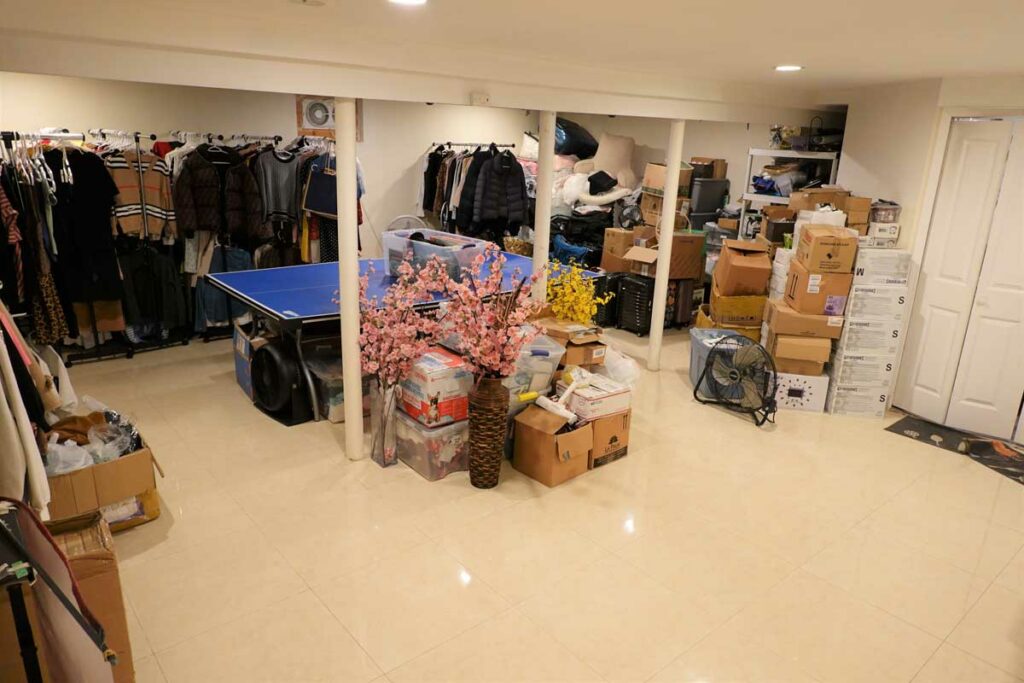Firefighters must be wary of this rarely seen dynamic fire event
On December 3, 2022, the Washingtonville Fire Department, Orange County New York, was dispatched to smoke in basement of a residence. All departments in this part of the country have responded to this type of alarm many times during the winter months due to malfunctions in home heating devices. Our first thoughts are a boiler/furnace that is fired with #2 fuel oil has backed up into the home. Firefighters respond to this alarm so often we know what to expect and how to address it. This alarm was different.
Upon arrival, the first-arriving chief reported smoke in the basement. He turned off the boiler from the emergency switch at the top of the basement stairs and exited the home. His size-up reported a smoke-filled basement, heavy smell of fuel oil, and family accounted for and exited the home. Our first-due engine took a hydrant and allowed space for the first-due truck, as is our standard response. Due to the amount of smoke, a hoseline was stretched and left dry for precaution. What was found was not the typical boiler malfunction, but a boiler malfunction called a “White Ghost.” Most members on scene had not responded to this type of call.
- Frank C. Montagna: The White Ghost
- ‘White Ghost’ explained
- ‘Everyday Calls’ Involving Oil-Fired Furnaces
- Differentiating the “Fireground Phenomena”
A White Ghost is a rare and perhaps least known and responded to oil burner emergency. It also may be the most dangerous. Typical oil burner emergencies consists of backfire/flame out, broken flue pipe, clogged fuel filter, or improper burning of the fuel. When there is an issue where the flame is either lost or very inefficient, this creates heavy soot, black smoke from the exhaust (chimney), and sometimes causes black, sooty smoke to back up into the home due to a loss of a draft within the chimney or failure of a powered draft exhaust. This requires a simple disconnect of the boiler emergency switch, confirm the boiler is off (i.e. no fire in the fire box), and then ventilation of the home while monitoring the atmosphere with the proper gas detection meters. Once the emergency has been controlled, the homeowner can be directed to contact for service on the boiler to allow it to be used safely. This happens many times during the heating months in areas of the country where oil fired heat is used, typically from the improper/lack of maintenance.
The “White Ghost,” however, is a different and more dangerous oil burner emergency, one which places both the resident and first responders in harm’s way.
The “White Ghost” emergency differs from the sooty backfire where for some reason there is a flame loss in the firebox, but oil is continued to be pumped through the nozzle into the hot fire box. The heat within the fire box is not enough to ignite the oil—which creates the soot and heavy black smoke, as found in the backfire—but to boil the fuel oil and vaporize it, creating a white fog or cloud of atomized fuel oil within the residence. With an area of the home being charged with atomized fuel oil (most likely the basement), all that is needed is the correct about of air and an ignition source for an explosion/fire to occur. If this mixture is correct or is enabled by the door that was opened by the residence or the fire department itself, an explosion could take place, causing structural damage/collapse, fire engulfing the area, and injury to all those within the structure.
First-arriving personnel entered the home to vent out the home, expecting a normal oil burner backup. All were in full personal protective equipment and self-contained breathing apparatus. All went on air prior to entering the basement due to the levels of “smoke” that was encountered. Smoke ejectors were set for positive pressure at the front door and into the basement to vent the oil fog. Crews carried our four-gas meters and were detecting high levels of carbon monoxide (CO), but little to no readings on the lower explosive limit (LEL) reading were displayed on the meters (This later raised questions about why that was). The oil was atomized; not a gas form as natural gas or propane, but rather a droplet-like form such a fog or mist. Our meters have the ability pull in gases to determine the atmosphere levels of the sample. The size of the atomized fuel oil is much larger than a gas and cannot be pulled into our meters to be measured, therefore there was no reading for LEL. The high CO reading was detected due to the incomplete combustion that was created by the boiler malfunction. This is where a danger point comes into play. We use our tools, in this case gas meters, to help guide our on-scene response decisions. When one of those tools is not or cannot read an environment properly, firefighters must revert to knowledge and experience. In short, know your tools’ abilities and just as important, their limitations. CO is one of the worst gases for our explosive limit range (14% to 84%), one of the largest ranges, which can have catastrophic outcomes. Over 100ppm can be lethal.
To return to the interior conditions, the oil fog left an oily film on all surfaces within the finished basement. By wiping the walls, firefighters were able to leave marks and note a fine layer of oil on the hand. All the many items in this basement had a film of oil on them. The smell of fuel oil was throughout the residence. In such an event, firefighters should be cautious while moving in the basement so that they do not slip and fall on the steps of floor due to the oil.
Firefighters inspected the oil boiler and, opening the draft damper, found a thick level of heavy oil soot inside the metal chimney. This amount of the fog traveled from the fire box into the chimney stack. This residue is highly flammable, and if there was any ignition within the fire box, a heavy fire load would be ignited within the chimney, which traveled up and through the center of the residence with limited access to extinguish.
The homeowner, who did not speak English, stated that the boiler was serviced the prior day. We are not sure if this was the case. Many service companies will place a company sticker on the boiler with the date service was completed. This was not found. This raised some suspicions, but the homeowner was informed that the boiler was tagged out of service until it was fully repaired and cleaned. Firefighters shut off the main emergency switch and the fuel oil supply to the unit.
A follow-up visit conducted some days after the alarm found the basement cleaned by the homeowner and the boiler fully serviced and placed in use. From a discussion with the homeowner, the service technician stated that the emergency was caused by the windy conditions at the time of the alarm. Wind blew down the chimney while the boiler was under fire, blowing out the flame. This description, for many of us, is highly questionable. If this was the case, this or another malfunction would have most likely have happened prior in the home during windy periods, but that was not the case. Many felt that, given that the homeowner didn’t speak English and couldn’t understanding the severe danger from this kind of alarm, he was being taken advantage of.




From the attached pictures, one can see that the basement was cleaned by the homeowner. At the time of the alarm, the basement was highly cluttered with the clothing that can bee seen hanging, spread throughout. The open ceiling area above the boiler was removed due to it be soaked with oil. There was not any exterior access to the basement, with only one window that exited the rear under a deck that had a small window fan in it. This made it difficult to ventilate the basement, taking an inordinate amount of time. The day following the alarm, the homeowner opened a hole in the sheetrock wall to the basement to assist in the removal of the oil smell. Given that the odor was impregnated into the sheetrock and clothing, we are not fully sure that it assisted much in the end.
- Construction Concerns: Heating Boilers
- Construction Concerns: Heating Appliance and System Maintenance
- The Multigas Meter
- Hazmat Survival Tips: Interpreting Readings from Atmospheric Monitors
As with any alarm that contaminates our PPE, those who entered the residence prior to full ventilation had their PPE cleaned. We have a local company conduct our gear cleaning and, upon their return, they all still had an odor of fuel oil. All sets were sent out for specialized cleaning and inspections to ensure the safety of our membership. The concerns were that if it is noticeable by our nose, there remains contamination.
This alarm was the second time for two members responding to a “White Ghost” call; the prior incidents had been 25-30 years prior. Firefighters are typically familiar with the type of calls we run on a daily basis, but we also need to be familiar with the kind of calls that we might respond to only once or twice in our entire firefighting career. These high-risk/low-occurrence alarms can have devastating outcomes if we to heed the warnings of our “gut” instincts. Training officers should conduct brief drills on these rare, high-hazard alarms, not only for the benefit of the service we provide to our residents but also for the safety of our members.
TIM PILLSWORTH has been in the volunteer fire service since 1986 and is a firefighter/EMT with the Washingtonville (NY) Fire Department and a past chief and life member of the Winona Lake (NY) Engine Company. He has presented at FDIC International and at other local and regional conferences on engine company operations and leadership in the volunteer fire service. He authored and coauthored many articles on PPE, volunteerism, engine company operations, attack system flow testing, and volunteer fire department management and planning. He is the author of the PPE chapter in Fire Engineering’s Handbook for Firefighter I and II. He is a project engineer for the Army Corps of Engineers at the U.S. Military Academy at West Point, New York.

